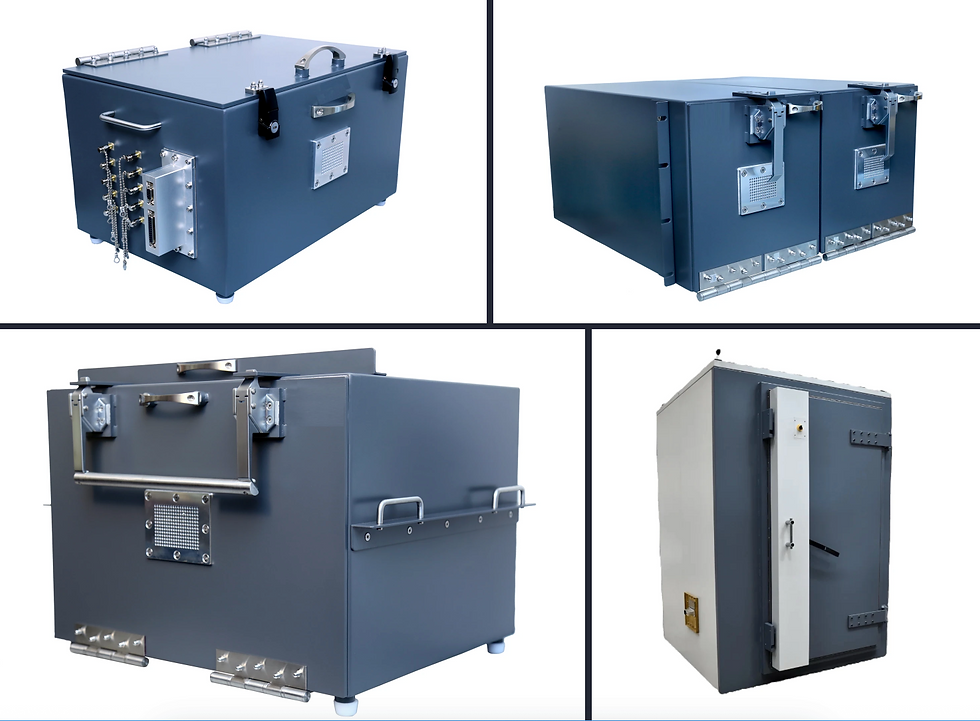Securing Signals: Importance of RF Shield Box for testing for OEMs
- theapventure
- Feb 8
- 2 min read
Updated: Mar 27

Ensuring the reliability and accuracy of electronic devices is paramount for all OEMs. One key factor in achieving this is the use of enclosures to protect from Radio Frequency Interference, aka RF Shield box, during testing procedures. RF shielding involves creating an environment that isolates electronic devices from external electromagnetic interference (EMI), thereby preserving the integrity of test results.
Understanding RF Shielding
RF shielding refers to using conductive materials to block or attenuate electromagnetic fields. This is typically achieved by enclosing devices within materials that prevent unwanted RF signals from entering or exiting, ensuring that the device under test (DUT) operates in a controlled and interference-free environment.
The Importance of RF Shielding in Testing
Preventing External Interference
RF shielding acts as a barrier against external RF signals that could disrupt the normal operation of electronic devices during testing. By minimizing exposure to such interference, testers can obtain accurate and consistent measurements, which are essential for assessing device performance.
Ensuring Regulatory Compliance
Many industries have stringent standards governing electromagnetic emissions and susceptibility. Implementing effective RF shielding during testing helps manufacturers ensure that their products comply with these regulations, thereby avoiding potential legal issues and market entry barriers.
Protecting Sensitive Data
In sectors like defense and telecommunications, devices often handle sensitive information. RF shielding during testing prevents unauthorized access or leakage of this data, maintaining confidentiality and security throughout the testing process.
Enhancing Testing Accuracy
By eliminating external RF noise, shielding creates a controlled environment that enhances the precision of test results. This accuracy is crucial for identifying potential issues and ensuring that devices meet the required performance criteria before reaching the market.
Facilitating Reliable Device Evaluation
A shielded testing environment allows for the consistent evaluation of a device's response to RF signals, ensuring that performance metrics are not skewed by external factors. This reliability is essential for developers and engineers aiming to fine-tune device functionality.
Incorporating RF shielding into the testing phase of electronic device development is not merely a precaution but a necessity. It safeguards against external interference, ensures compliance with regulatory standards, protects sensitive data, and enhances the overall accuracy and reliability of test results. Shielding requirements are different for every use case, and we are here to help. Reach out to us to learn more about how we can partner to solve your specific needs around testing.




Comments